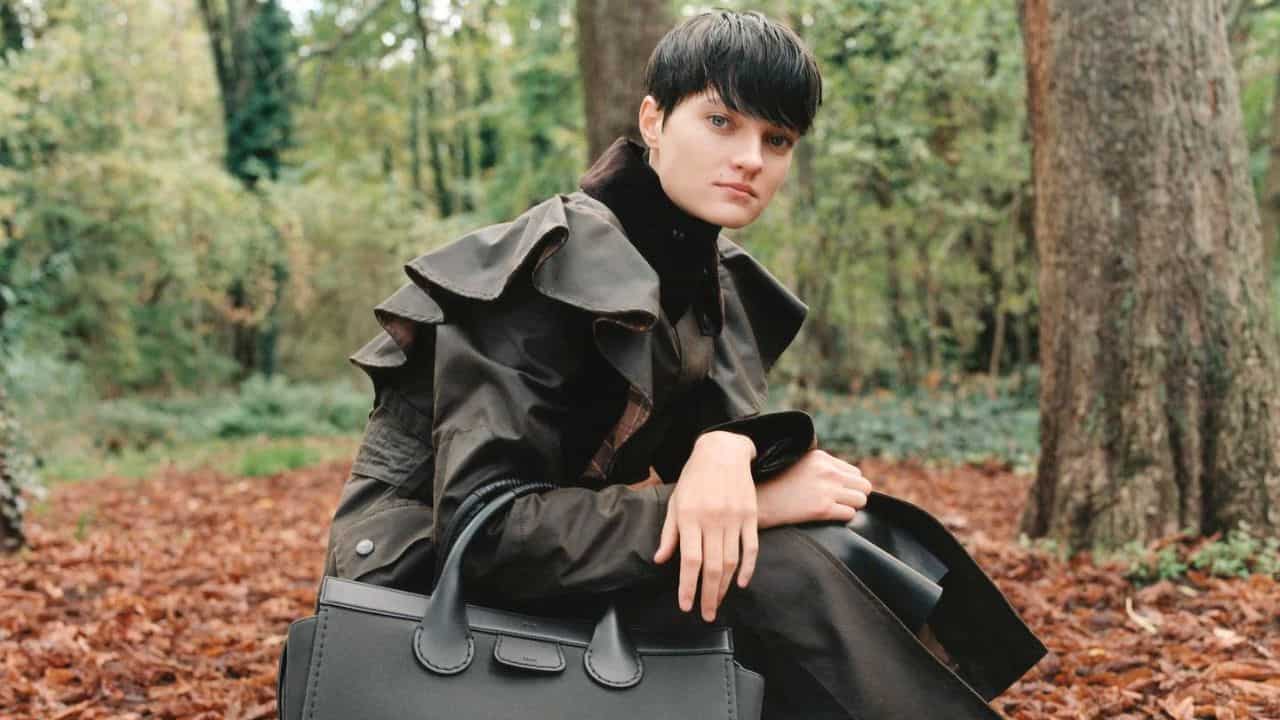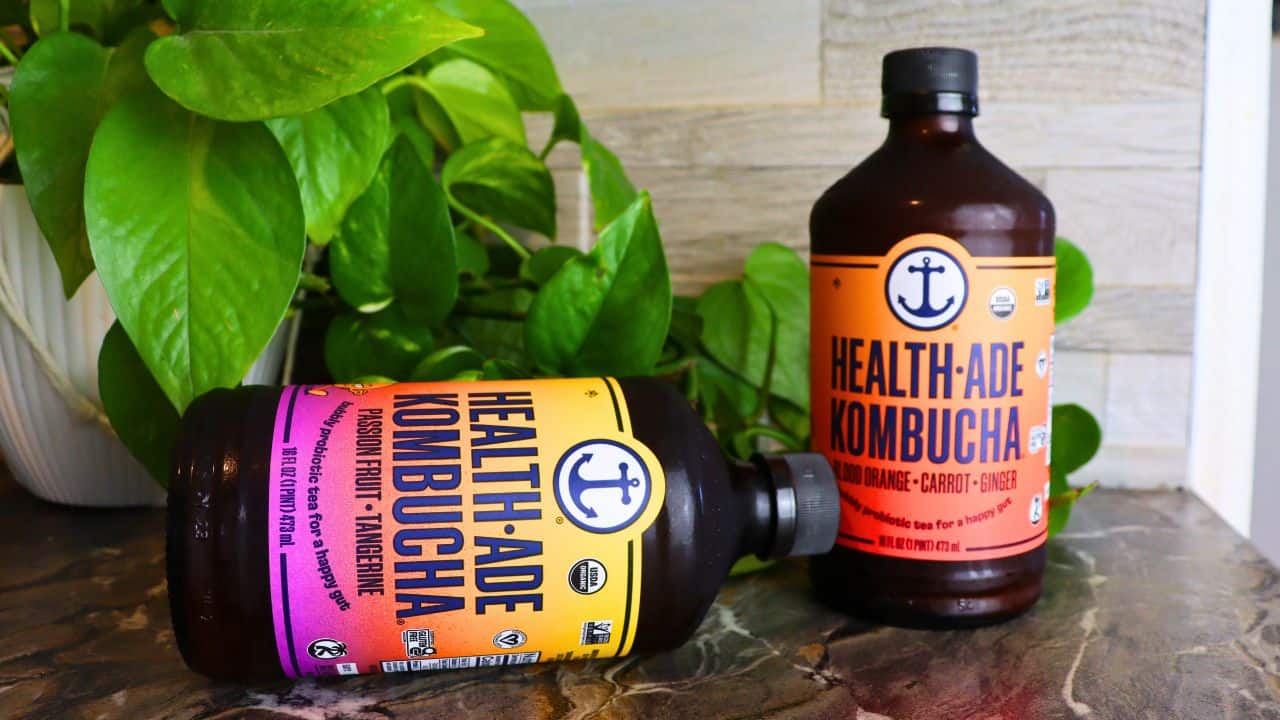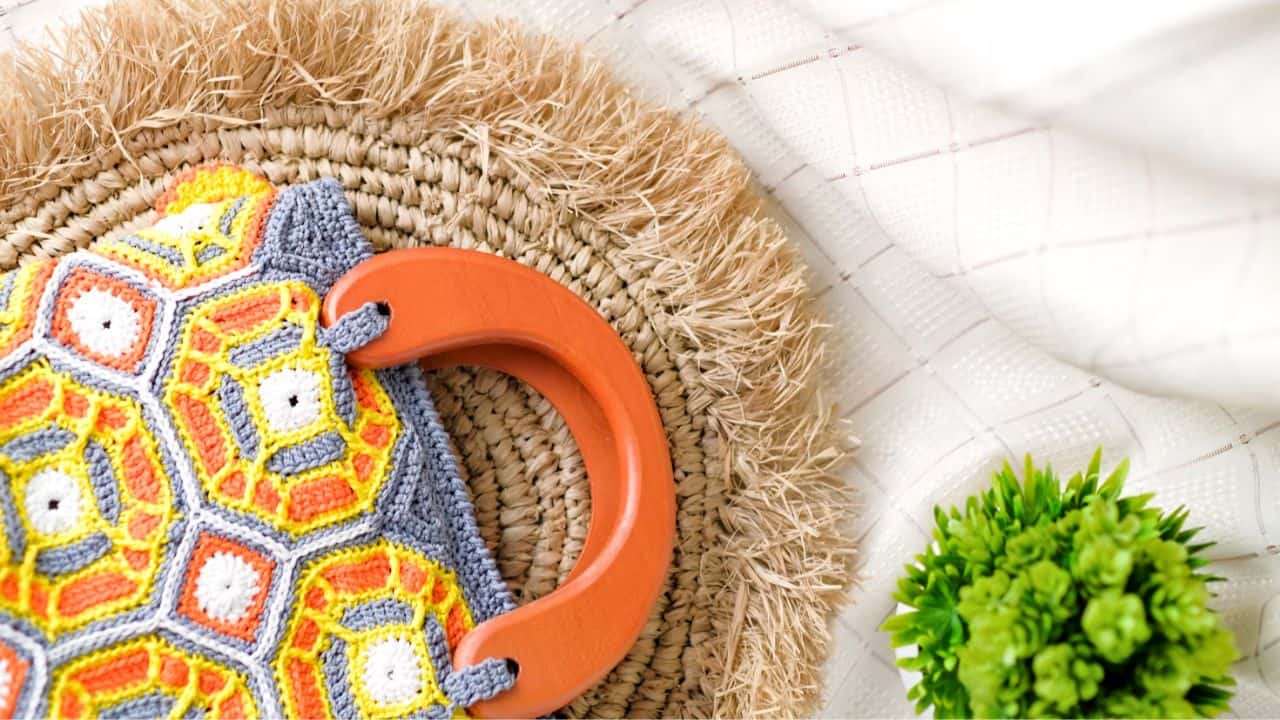If you’ve ever looked at a newly formed hole in your jeans or a coat button dangling by a thread and thought: time to go on a shopping spree, you’re not alone.
Instead of reaching for the sewing kit, women aged 16-37 are shelling out £81 per month on clothes; a whopping 60% more than those aged 54+, according to a recent Censuswide poll. And it’s not just their bank balance that’s taking the hit. This cycle of pay, display and discard is responsible for contaminating waterways, fuelling exploitation of workers and polluting the air with climate-wrecking emissions.
Like all the best home cooked recipes, could the antidote to our fast fashion addiction lie with the older generations? Environmental charity Hubbub and natural knitwear mavern WoolOvers think so.

Heather Poore, Creative Director at Hubbub says: “Our research shows that the Baby Boomers and Silent Generation seem to hold the secret to how to buy good quality items and if needed, repair them to extend their lifetime. We need to get women across the UK talking and sharing these invaluable skills and insights, in a bid to tackle the damaging effects of fast fashion.”
“The relationship between generations is important: young people often learn their first style lessons from their mothers and grandmothers while they educate their elders on new fashion trends. However, little is known about what older women think about the environmental impact of fashion and how and whether they are communicating on this with younger people, so it was something we were keen to explore,” says Mike Lester, CEO at WoolOvers. “It’s clear just how much attitudes differ between the generations and the valuable knowledge mothers and grandmothers can pass on to young people to help them make a positive impact on both their bank balance and the environment.”
From knowing which fabrics to avoid to all the ways you can reuse your old threads, we’re shining a light on age-old solutions to this modern malaise.
Opt for quality not quantity
We only need to glance at our bulging wardrobes to see how shopping habits have changed, with Britons buying five times the amount of clothing they bought in the 1980s. Now there are 52 ‘micro seasons’ competing for our bodies and our purse strings, choosing an outfit no longer revolves solely around ‘dressing for the weather’.

For Wendy Pedlow, age 54, the answer to our fast fashion woes is simple: “Don’t buy ultra fashionable clothes, then they don’t go out of fashion. Develop your own style rather than following fashion.”
But in our trend-led, Instagram-ready culture where celebs who repeat-wear outfits often make headline news, this is easier said than done.
So, how do we cultivate a style that doesn’t rely on trends or season?
Creative Director at People Tree, Tracy Mulligan says make your wardrobe adaptable: “When you start to buy your own clothes, it’s a good idea to buy versatile pieces which you can style in different ways. They will last you a long time and save you money in the long term. Think how many different looks you can get from a capsule selection. Do your research online and screen shot images to line them up together,” she adds.

“Think how many different looks you can get from a capsule selection. Do your research online and screen shot images to line them up together”
50+ vintage fashion expert and sustainable stylist Karen Welton, agrees it’s about making your clothes work for all occasions: “Dress down your dresses with trainers, add a polo neck under summer dresses or skirts to make a season-less wardrobe.”

As readers of Pebble’s weekly Lust List will know, there are tonnes of brands (Ethical Consumer Best Buys Patagonia, Know the Origin and Beyond Retro to name a few) out there who put people and planet before profit. But a fair trade, fair wage, sustainably sourced item will usually cost more than its mass produced equivalent.
Diana Korchien, 68 who still owns (and wears) a knitted tank top she bought from Miss Selfridge in the 70s, says despite the influx of poorly made high street brands, second hand shopping can still come up trumps. “I recommend charity shops for seeking out long lasting vintage quality. There’s a lot of newer rubbish, but when a clothes hoarder like me dies you can strike gold!”
If price is still an issue, Mulligan advises asking “for your presents to be vouchers from your favourite sustainable brands.”
Click here for more insider tips for secondhand shopping from our vintage fashion expert.
Check the labels
It’s not just over consumption that’s harming the planet, modern materials such as polyester and nylon shed harmful plastic microfibres that contribute to marine plastic pollution, while chemical-intensive cotton uses up precious land and water resources.
Being mindful of materials is crucial to lessening their environmental impact: “Check labels for certifications and try to avoid plastic-based fabrics like polyester and acrylic. Additionally, look for fabrics made 100% of one fibre. If they do wear out they can be more easily recycled. If they are of better quality they have a chance for resale on apps such as Depop or can be donated to charity shops or clothes swaps,” says Mulligan.
While checking the label, you should also watch out for shoddy stitching, fraying hems and patterns that don’t match at the seams. Opt for metal zippers over plastic ones and check for spare buttons – a surefire indication this item was made to last.

Keep a clean conscience by washing less
In 1970, only 65 % of UK households owned a washing machine. Today that figure is nearing 100%.
But a weekly laundry pile of mammoth proportions won’t win you any sustainability points with Suzan Quilliam, 59.
“Many of us wash our clothes every day out of habit and don’t even check to see if they smell or have visible marks. Avoid unnecessary washing by spot washing marks or hanging your clothes up to air instead. If it does need a wash, wash it on cold and use the delicate or wool wash setting. This will reduce the wear and tear on the fabric and the microfibres in the water supply etc. When cooking or doing housework, channel your inner granny and wear an apron to keep your clothes clean.”
When she was growing up, Quilliam could only afford a few new clothes each season and often made dresses, skirts and knitwear herself.
As well as putting worn clothes back in the wardrobe instead of the washing basket, spot washing and using the delicate or wool wash settings on your machine can maximise the durability of your clothes, with minimal effort on your part.

“When cooking or doing housework, channel your inner granny and wear an apron to keep your clothes clean”
Be a mender not a tosser
When it comes to mending our clothes, only 30% of Gen Z will carry out repairs, with a quarter asking a friend of relative to fix it for them. Whereas more than half (51%) of Baby Boomers patch up garments themselves.
For younger generations, it might seem like a tricky and time-consuming task to fix that hole-ridden jumper when you can have a whole new outfit in the click of a button, but this DIY approach to fashion is making a comeback.
As repair cafes spring up and the #visiblemending movement spreads, more of us are realising there is joy to be found in picking up a needle and thread.

Susie O’Donoghue, 71, agrees: “You should source the nicest sewing box or basket before filling it with pretty pins, needles, a tape measure, sharp little scissors, a rainbow of coloured sewing threads and start a button collection… I defy anyone to not enjoy caring for their clothes!”
As well as classes at school, O’Donohue’s mother taught her how to sew on buttons, turn up hems, turn collars on shirts and sew leather patches on her father’s tweed jackets.
If you skipped textiles class, alternative avenues for honing your sewing skills include books, YouTube, beginners’ workshops and repair cafes. Or check out our simple how to’s to get your sewing skills started below.
How to fix a fallen hem (the quick way

Upcycle before you recycle
If you thought eco-friendly faAshion was all about plain-but-pricey basics, spend an hour on Stitchless Tree, an upcycling YouTube channel showing people how to ‘sew their own style’.
For founder and host, 54-year-old Tree creativity is key. “Before dismissing that cardigan in your wardrobe, try it on upside down. See it through new eyes as it’s transformed into a shrug with a shawl like collar.” Her most radical upcycling project involved transforming two pairs of jeans, a lurex jumper and a vintage tourism scarf into a funky zip-up top.
Tree picked up her sewing prowess from her mother who also appears on the show. Both are pro-upcyclers who see the potential in the stuff others would ordinarily bin.
A final word of advice from 82 year old Philomena Walsh: “Don’t throw those old granny knickers…..They’ll make the best rags for cleaning the floor!”
Mike Lester, CEO of WoolOvers comments: “It’s clear just how much attitudes differ between the generations and the valuable knowledge mothers and grandmothers can pass on to young women to help them make a positive impact on both their bank balance and the environment.”
Not all millennials are fast fashion addicts, meet the next generation of ethical fashion designers










